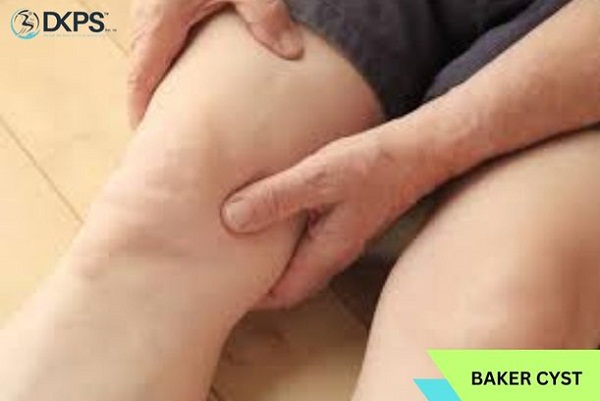- Home
- About Us
- DKPS Dealing
- BLOG
- Delhi NCR
- Delhi
- Physiotherapy at Home Near Me | Physiotherapist in South Delhi
- Best Chiropractor in Delhi
- Physiotherapist in Delhi
- Cupping Therapy in Delhi
- Home Nursing Services in Delhi
- Needle Therapy for Back Pain
- Sports Injury Physiotherapy
- Best Physiotherapist Visit at Home in Rohini Sector 24
- Physiotherapy at Home In Rohini Sector 9 |
- Physiotherapist in Pitampura | Physiotherapy at Home in Pitampura
- Physiotherapy at home in Rohini sector 29
- Physiotherapist in Paschim Vihar
- Physio home visit | Home Visit Physiotherapy |
- Physiotherapist in Saket | Best Physiotherapist in Saket |
- Physiotherapist In Janakpuri | Best Physiotherapist in Janakpuri |
- Best Physiotherapist in Punjabi Bagh | Punjabi Bagh Physiotherapist |
- Best Physiotherapist Service at Home in Dwarka, Delhi
- Best Physiotherapist in Chandigarh at Home Visit
- Faridabad
- Gurugram
- Noida
- Best Physiotherapy Gorakhpur
- Best Physiotherapist in Lucknow | Physiotherapist in Lucknow near me |
- Delhi
- Mumbai
- Delhi NCR
- Department
- Doctors
- Gallery
- Packages
- Contact Us
- Home
- About Us
- DKPS Dealing
- BLOG
- Delhi NCR
- Delhi
- Physiotherapy at Home Near Me | Physiotherapist in South Delhi
- Best Chiropractor in Delhi
- Physiotherapist in Delhi
- Cupping Therapy in Delhi
- Home Nursing Services in Delhi
- Needle Therapy for Back Pain
- Sports Injury Physiotherapy
- Best Physiotherapist Visit at Home in Rohini Sector 24
- Physiotherapy at Home In Rohini Sector 9 |
- Physiotherapist in Pitampura | Physiotherapy at Home in Pitampura
- Physiotherapy at home in Rohini sector 29
- Physiotherapist in Paschim Vihar
- Physio home visit | Home Visit Physiotherapy |
- Physiotherapist in Saket | Best Physiotherapist in Saket |
- Physiotherapist In Janakpuri | Best Physiotherapist in Janakpuri |
- Best Physiotherapist in Punjabi Bagh | Punjabi Bagh Physiotherapist |
- Best Physiotherapist Service at Home in Dwarka, Delhi
- Best Physiotherapist in Chandigarh at Home Visit
- Faridabad
- Gurugram
- Noida
- Best Physiotherapy Gorakhpur
- Best Physiotherapist in Lucknow | Physiotherapist in Lucknow near me |
- Delhi
- Mumbai
- Delhi NCR
- Department
- Doctors
- Gallery
- Packages
- Contact Us
BAKER’S CYST
- Home
- BAKER’S CYST

What is Baker's cyst?
A Baker’s cyst also called a popliteal cyst, is a type of fluid collection behind the knee. Often there are no symptoms. If symptoms do occur these may include swelling and pain behind the knee or knee stiffness. If the cyst breaks open, pain may significantly increase with calf swelling. Rarely complications such as deep vein thrombosis, peripheral neuropathy, ischemia, and compartment syndrome may occur.Risk factors include other knee problems such as osteoarthritis, meniscal tears, and rheumatoid arthritis.
The underlying mechanism involves the flow of synovial fluid from the knee joint to the gastrocnemius-semimembranosus bursa, resulting in its expansion. The diagnosis may be confirmed with ultrasound or magnetic resonance imaging (MRI).
Treatment is initially with supportive care. If this is not effective aspiration and steroid injection or surgical removal may be carried out. Around 20% of people have a Baker’s cyst. It is named after the surgeon who first described it, William Morrant Baker.
sign and symptoms?
There may be painless or painful swelling behind the knee. The cyst may feel like a balloon filled with water. Occasionally, the cyst may break open (rupture), causing pain, swelling, and bruising in the back of the knee and calf. It is important to know whether the pain or swelling is caused by a Baker cyst or a blood clot.
Causes :
A Baker’s cyst can develop from a knee injury due to a sports injury or a knee injury. Baker’s cysts can also sometimes occur if you have a medical condition such as osteoarthritis – usually caused by age-related ‘wear and tear’ on the joints; It particularly affects the knees, hips, hands, and toes.
treatment
To reduce the size of the cyst, your healthcare provider may remove fluid from the cyst using a needle. This is called needle aspiration and is often done under ultrasound guidance. If the cyst is causing joint problems, arthroscopic surgery may be performed to correct the problem.
Exercise
Many activities can put a strain on the knee, and cause pain in the case of Baker’s cyst. Avoiding activities such as squatting, kneeling, heavy lifting, climbing, and even running can help prevent pain. Despite this, some exercises can help relieve pain, and a physiotherapist may instruct on hamstring stretching to reduce pressure on the Baker’s Cyst, and strengthening exercises for the quadriceps and the patellar ligament.
how is physiotherapy helpful in baker cysts?
Physiotherapy can be helpful in the treatment of a Baker’s cyst, which is a fluid-filled sac that develops behind the knee. Physiotherapy aims to reduce pain and swelling in the affected area, increase the range of motion, and prevent further injury.
Here are some ways that physiotherapy can be helpful in the treatment of a Baker’s cyst:
Pain management: Physiotherapists can use various techniques to help manage pain, such as ice therapy, ultrasound, and electrical stimulation.
Range of motion exercises: Stretching and range of motion exercises can help improve flexibility in the knee joint, which can help alleviate pain and swelling.
Strengthening exercises: Strengthening exercises can help improve the strength of the muscles around the knee joint, which can help support the joint and prevent further injury.
Activity modification: Physiotherapists can help patients modify their activities to reduce pain and prevent further injury. For example, they may recommend avoiding activities that put excessive stress on the knee joint.
Education: Physiotherapists can provide instruction on proper posture and body mechanics to help reduce stress on the knee joint, and they can also provide advice on home exercises and self-care techniques.
Overall, physiotherapy can be an effective treatment option for Baker’s cysts, and it can help patients manage their symptoms and prevent further injury.
